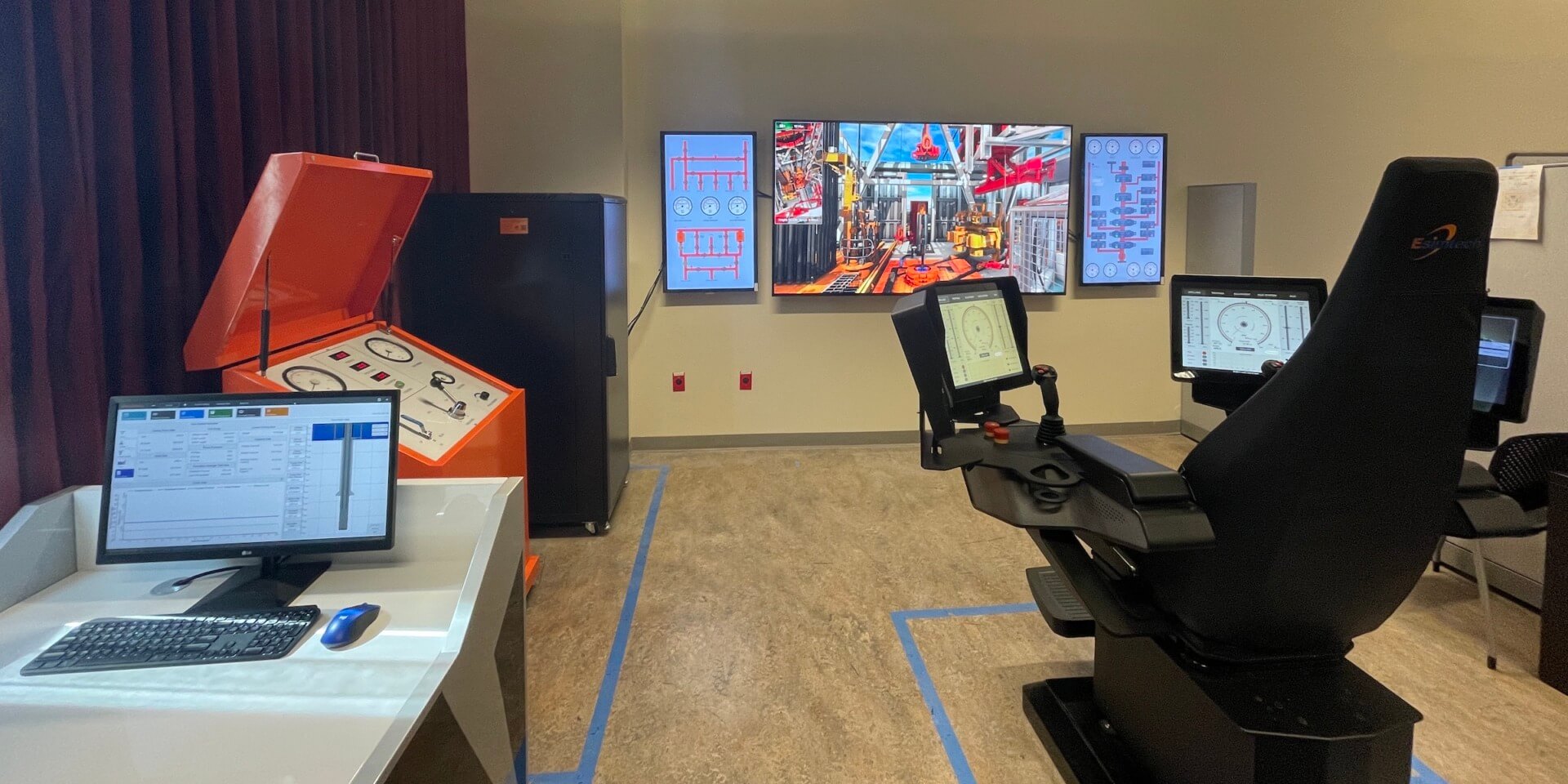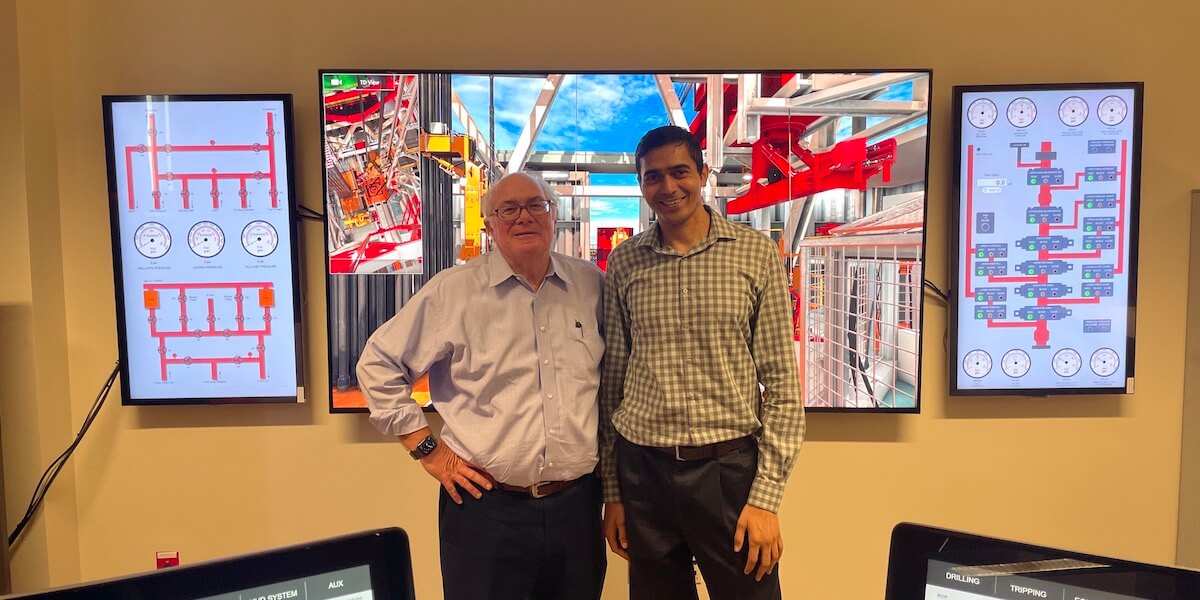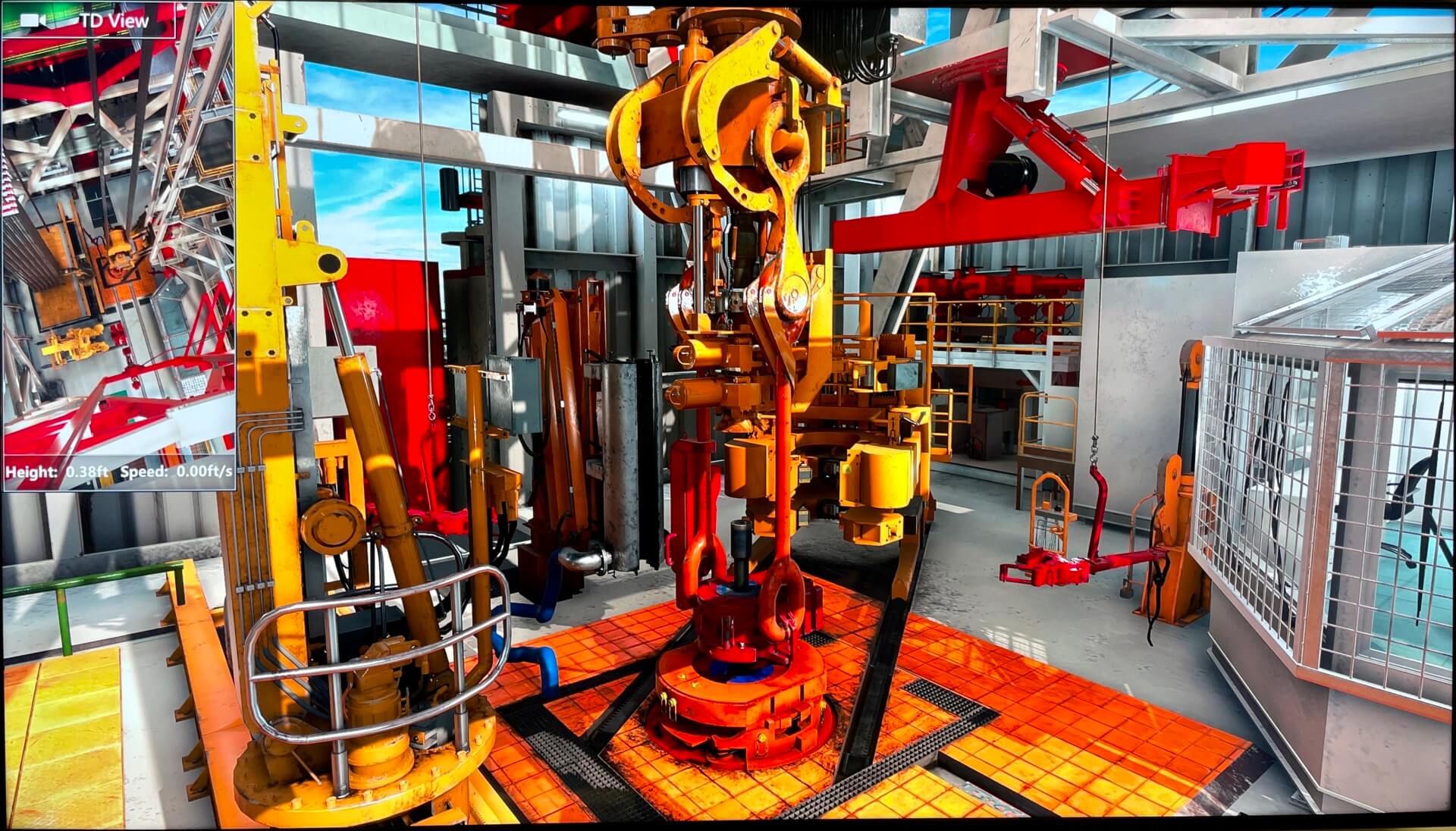
A new drilling simulator in the Mork Department will give students invaluable practical experience in subsurface technologies.
The Mork Family Department of Chemical Engineering and Materials Science has acquired an advanced piece of simulation equipment to give students real-world experience in subsurface technologies, preparing them for careers in a transitioning energy sector.
The drilling simulator — developed and installed by China-based company Esimtech and supported through a donation from Chevron — will allow students to experience what it is like to drill underground for the oil, gas, geothermal or energy storage industries, taking into account a range of different environments and uncertain events. The technology is equivalent to commercial simulators used by leading industry employers, allowing USC Viterbi students to hit the ground running in graduate roles within all facets of the energy sector.
The purchase and installation of the new equipment was coordinated by Assistant Professor of Petroleum Engineering Birendra Jha. The new facility will be used in courses including Jha’s Formation Data Sensing with Well Logs (PTE 461) and Drilling Technology and Subsurface Methods (PT 465), which is taught by Lecturer of Petroleum Engineering Bradford Pierce.
Students operate the simulator from a cyber chair, where they control two levers and four small screens. A large screen at the front displays the drilling platform, drill hole, and surrounding environment. Meanwhile, the instructor manages a control desk, where they can program unique scenarios and challenges for students to overcome.
Director of Petroleum Engineering in the Mork Family Department Iraj Ershaghi said:
“I am pleased that the students in petroleum, chemical and mechanical engineering can benefit from the training modules that Dr. Jha is developing for the undergraduate and graduate students.”

Lecturer of Petroleum Engineering Bradford Pierce and Assistant Professor of Petroleum Engineering Birendra Jha in front of the new drilling simulator.
Jha said that there were only a couple of vendors internationally that manufacture and sell this type of equipment, and Esimtech is a newer company that supplies simulators to the industry.
“This is meant to simulate what goes on at the time of drilling at a well site. We can encounter uncertainty at the time of drilling in the subsurface,” Jha said. “For example, when we drill through subsurface rocks, the fluid pressure could be too high and if unchecked, it can lead to a safety issue, such as blowout, which is very dangerous,” Jha said.
The device is like a flight simulator and trains students to prevent the uncontrolled flow of oil and gas during drilling operations.
In 2010 the largest underwater blowout in U.S. history happened in the Gulf of Mexico when the BP-operated Deepwater Horizon drilling rig exploded and caught fire, causing 11 deaths, and resulting in the world’s largest accidental marine oil spill. During the spill, the U.S. Coast Guard estimated that oil was leaking into the gulf at a rate of 340,000 gallons per day.

A screenshot from the new simulator.
Jha said that the simulator would allow instructors to devise scenarios emulating the conditions in the lead-up to a blowout, so that students would understand the measures needed to avoid potential catastrophes.
“I’ll be sitting at my instructor’s desk to the left of the cyber chair, and I can control when such a blowout event can occur to create a realistic scenario for the student,” Jha said. “The student will be watching all the metrics, for example, the rate of penetration and the pump pressure. From there the instructor can create a scenario that at a certain depth we will encounter an over-pressured formation — a high-pressure rock layer that can lead to a blowout, if not controlled properly.”
Jha said that the simulator would also have many important applications in the transition toward non-fossil-fuel-based energy.
“Many energy transition technologies are based on the subsurface underground environment, with the same reservoirs and rock layers we use for extracting hydrocarbon fossil energy,” Jha said.
Jha said that this simulator will also help the students understand subsurface drilling and completion for energy storage. One aspect of his research focuses on compressed air energy storage, which uses the subsurface as battery storage by converting excess daytime renewable energy to compressed air, and then storing it underground. The compressed air is then released to turn turbines and generate electricity when needed.
The simulator will also be applicable for renewable geothermal energy systems, which harness subsurface heat to generate energy.
“To access high heat at large depths in geothermal applications, the drilling operation has to go really deep, and the system gets exposed to high temperatures which we haven’t seen in regular oil and gas drilling,” Jha said.
Jha said that for many years, only oil and gas companies had access to this type of advanced simulator equipment.
“That really hampered the education of students, who get a degree and know the concepts as they are in the books, but then they join a company which then has to train them over months, if not a year, before they are ready,” Jha said. “Now companies will be aware our students learned on this simulator, which will reduce that training time.”
Published on January 13th, 2023
Last updated on January 13th, 2023











